Currant leaf tea, benefits and harms, how to prepare it correctly

Black currant leaves have a wide range of therapeutic effects on the body. In order to preserve their beneficial properties, you need to know when to collect the leaves. currantshow to store and brew correctly.
Content:
- currant plant
- Harvesting conditions
- Beneficial features
- Use in cooking
- Currant leaves for medicinal purposes
- Tea recipes
- General strengthening herbal teas
- Contraindications and harm
currant plant
Black currant is a plant from the family gooseberry. It is a shrub no more than 1.5 m tall with palmate-lobed leaves that have a specific pleasant smell and black berries in the form of brushes that are sour in taste.
Cultivation of this plant began already in the 12th century, but only in the 17th century did it begin to be considered and used as a medicinal plant.
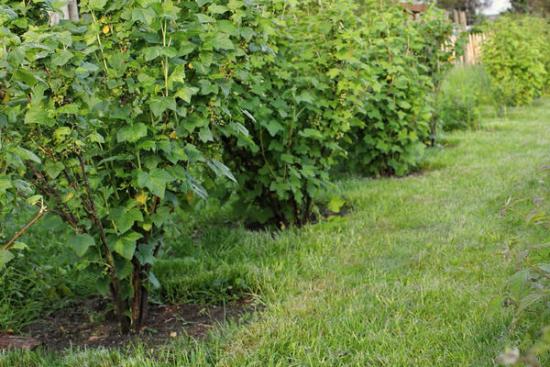
The flowering period occurs from mid-spring to early summer, and berry picking occurs from July to August. The lifespan of the bush is about 20 years, and for economic needs it is used no more than 10 years.
Wild black currant grows in forests, floodplains and swamps of Central Europe and Central Asia. It is cultivated in gardens and orchards.
Conditions for harvesting leaves
It is necessary to collect them for use in medicinal and culinary recipes during the flowering period. At this time, they accumulated the maximum amount of necessary vitamins, macro- and microelements.It is important that no chemical treatment was carried out a month before treatment bushes
Leaves should be chosen that are healthy and free of fungus.
The collection time is chosen between 10-12 o'clock, so that the morning dew has already dried, the weather should be clear, with minimal humidity.

Then they should be properly dried and stored:
- a thin layer of collected raw materials is laid out on a smooth dish (baking tray, dish);
- leave for 1 day in a dark place, hidden from sunlight;
- leaves, the edges of which have withered, are collected in stacks of 10 pieces and rolled into a tube;
- then they are placed in an enamel bowl, covered with a damp cloth, and placed in a warm place for 12 hours for fermentation;
- After the time has passed, dry it in the oven at 100 C;
- They can be stored for 2-3 years in glass containers with a tightly closed lid or cotton bags.
Beneficial features
During the flowering period, leaves accumulate ascorbic acid, essential oils, and phytoncides to the maximum, so their use:
- blocks the development of inflammation. Used in the fight against colds as decoctions;
- suppresses the formation of free radicals. Being an antioxidant, due to the presence of polyphenolic compounds, they prevent metabolic disorders, aging of the body and promote the removal of toxins;
- bactericidal and antiseptic, antifungal (external use);
- strengthens the body's protective function;
- has a tonic effect;
- helps remove uric acid;
- helps maintain the density of teeth and bones, strengthen the myocardium and regulate blood circulation (due to the presence of potassium, calcium, phosphorus).
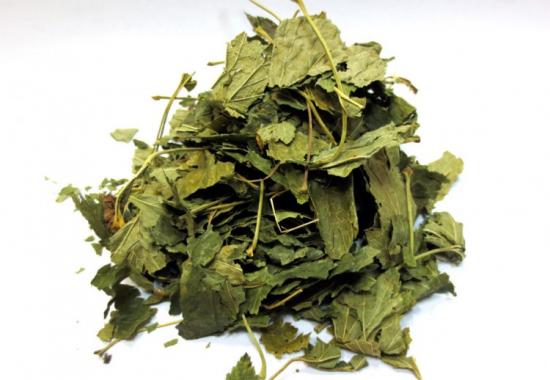
Infusion baths black currant have a positive effect on the condition of nails, skin, and hair.
Use in cooking
Black currant leaves can be used as a spice when pickling vegetables, and the content of phytoncides in them will ensure the preservation of the vitamin composition.
You can also preserve the leaves themselves so that you can later add them when preparing salads, fish or meat dishes in order to obtain a better taste and aroma.
They are used as a flavoring in compotes, wines, liqueurs, and vodka. Leaf based currants You can make fruit vinegar.
They are placed in a glass container, 100 g of sugar is added and filled with cold water. Cover with gauze and leave for 2 months. When finished, filter.
To brew tea, use both fresh and dried leaves. For 1 glass of boiling water, it is enough to take 2 tbsp. raw materials and brew for 15 minutes.
Currant leaves for medicinal purposes
Widely used as decoctions, teas or for external use in the treatment of the following pathologies:
- inflammatory diseases of an infectious nature (flu, sore throat, bronchitis, pneumonia, dysentery) - enhance the effect of antibiotics, reduce temperature;
- hypertension and atherosclerosis – increase vascular permeability;
- cardiovascular disorders - restore the heart rhythm, strengthen the heart muscles, prevent the development of a heart attack;
- changes in visual functions;
- kidney disease and urolithiasis - have a diuretic effect;
- diabetes mellitus – stabilize metabolism, reduces blood glucose;
- Gastrointestinal diseases – promote the excretion of bile;
- anemia – help in the process of blood formation and increase hemoglobin;
- dermatological diseases - reduce inflammation and eliminate fungus.
- oncology – prevent malignant neoplasms of connective tissue.
For older people, drinking this tea helps stimulate mental activity and prevents the development of Alzheimer's disease.
For example, with scrofula it is recommended to drink at the same time currant tea and take baths with the addition of decoction. In children, with the help of such baths, diathesis, prickly heat, dermatitis are treated, and in older age - radiculitis.
Systematic use of such a medicinal drink and taking baths based on the decoction has a positive effect in therapy and prevention.
Tea recipes
To achieve an antipyretic effect, take currant, raspberry and blackberry leaves at the rate of 20 grams of the first and 15 grams of the rest. Keep the resulting raw material in 400 ml of boiling water for 15 minutes, consume after meals.
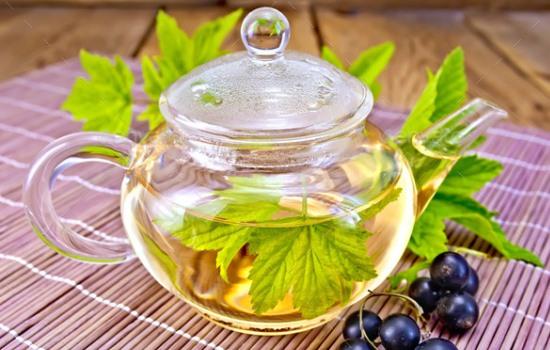
For rheumatism, add 3 tablespoons to 0.5 liters of boiling water. leaves. Leave for 2 hours. Drink 100 ml 4 times a day.
To relieve cough, tea is consumed as in the previous case. Prepare it in a slightly lower concentration - take 2 tbsp of leaves.
As a diuretic, add 6 pieces of leaves to 1 liter of boiling water. Drink 1 glass twice a day.
.
To improve gastrointestinal problems, a decoction of the leaves is used St. John's wort and black currants. It is prepared from 1 tbsp. the resulting mixed herbal raw materials and 1 cup of boiling water. 15 minutes. boiled in a water bath and consumed after cooling, 1/3 cup three times a day.
During anemia, clover flowers are added to the previous mixture in a ratio of 1 to 2. Then the decoction is prepared according to the same principle and drunk 0.5 cups 2-3 times a day.
Recipe for tea with blackcurrant leaves and mint. 10 leaves of each plant are placed along with 1 tsp. regular tea, 1 tsp. honey in a thermos with 0.5 liters of boiling water. After 2 hours it is ready to eat.
General strengthening herbal teas
You can take leaves as components for preparing a strengthening collection. hawthorn, thyme, clover, rose hips, Jerusalem artichoke, nettle, currants and strawberries.
Then 1 tbsp. l. collection, pour 0.5 liters of boiling water, infuse for 1/2 hour, filter. The course includes the use of 400 grams of dry mixture.
For the next herbal collection, take 50 grams of leaves raspberries, currants, rose hips, lingonberries. Place the resulting mixture in a container of boiling water (2 cups) and cook for 10 minutes. Do not remove the lid until it cools down.
You can also take 3 grams of leaves blackberries, currants, strawberries and 10 grams of thyme, St. John's wort. 1 tbsp. Pour boiling water (200 ml) over the resulting mixture and leave for 10 minutes.
Drink such restorative mixtures 2-3 times a day, 100-150 ml.
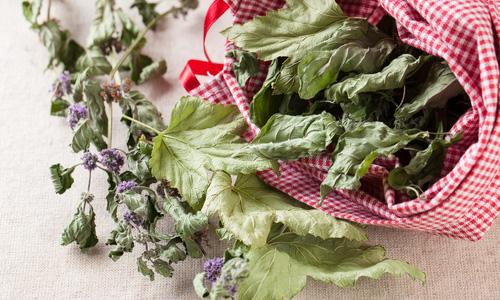
Contraindications and harm
Tea made from currant leaves is contraindicated for the following diseases:
- hepatitis;
- thrombophlebitis, there is a risk of increased blood clotting;
- gastritis, ulcers, high acidity.
You also need to consider the possibility of individual intolerance, both when drinking tea and when used externally.
During the period of bearing and feeding a child, you should not get carried away with this drink in order to avoid an overdose of the effect and the manifestation of allergic reactions.
Despite the fact that the medicinal properties of this plant are recognized by medicine, tea from currant The leaves may be beneficial or harmful depending on the amount consumed. Therefore, you should not get carried away with it, no matter how tasty this drink is.
You can learn about the beneficial properties of the leaves, the rules for preparing them, and the features of preparing tea by watching the video in more detail:

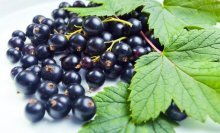
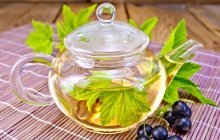

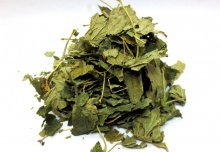
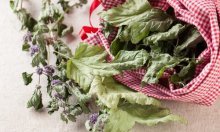
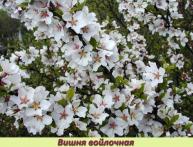
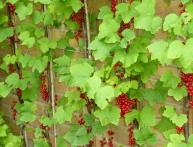
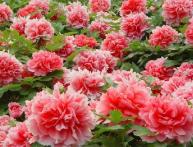
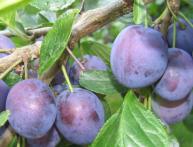
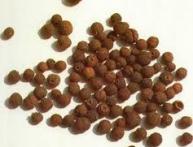
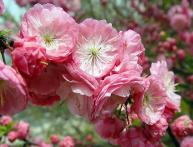
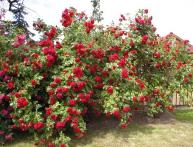

Comments
I didn’t know that you shouldn’t drink currant tea if you have hepatitis; when I was pregnant, I also drank it. Probably, I just have good tolerance, although I am allergic to many foods.
In spring or early summer, I collect and dry blackcurrant leaves, but in small quantities, add them to regular black or green tea, this gives a pleasant currant taste and aroma.